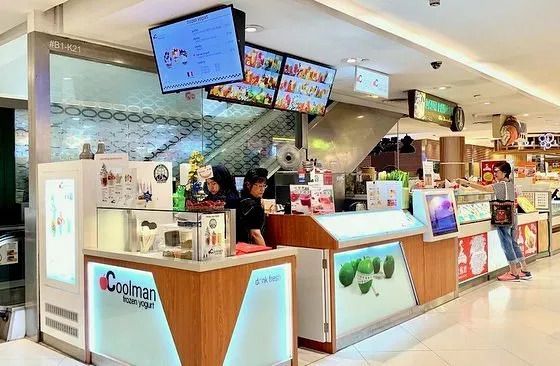Starting up a quick food kiosk in Singapore can be an exciting venture, but it requires careful planning and execution to ensure success in Singapore's competitive F&B landscape, with the number of competitors offering similar products and services. From selecting the right location to crafting an enticing menu, every aspect of the your preparation to set up your quick food kiosk plays a crucial role in attracting customers and establishing your brand. In this article we share are 7 essential tips to help you smoothen out the process and launch your quick food kiosk successfully in Singapore.
Thorough Market Research
Before starting your quick food kiosk, you should conduct thorough market research to understand the local food trends, customer preferences, and your competitors in Singapore. Identify gaps in the market and opportunities for differentiation to carve out a unique position for your kiosk. Analyze consumer demographics, traffic patterns, and popular dining locations to pinpoint the ideal location for your kiosk.
For example, if you are launching your bubble tea kiosk in a shopping mall in Singapore, you could conduct market research. like analysing the preferences of the mall's demographic, identified the demand for unique bubble tea flavors, and study the offers of competitors in the vicinity. This research helps your menu to cater to the preferences of your target audience and differentiate themselves in the market.
Choose the Right Location
Location is key to the success of your quick food kiosk in Singapore. Select a high-traffic area with a steady flow of foot traffic, such as shopping malls, business districts, or tourist attractions. Consider factors such as visibility, accessibility, and proximity to complementary businesses to maximize exposure and attract potential customers.
A food kiosk that is set up at a prime area with high tourist and local footfall can capitalise on the steady stream of tourists visiting the attraction and attracted locals with its innovative menu and convenient location.
Craft a Unique Menu
Develop a unique and enticing menu that sets your quick food kiosk apart from the competition. Consider Singapore's diverse culinary landscape and incorporate local flavors, ingredients, and food trends into your offerings. Keep the menu concise and focused on signature dishes or specialties to streamline operations and maintain consistency in quality.
For example, a dessert kiosk specializing in artisanal ice cream sandwiches can come up with a menu featuring locally-inspired flavors such as pandan, gula melaka, and durian. By incorporating familiar flavors with a creative twist, the kiosk appealed to Singaporeans' love for nostalgic treats while offering something new and exciting. This unique menu selection set them apart from traditional ice cream vendors and garnered a loyal following.
Invest in Quality Equipment
Invest in high-quality equipment and kitchen appliances to ensure smooth operations and efficient food preparation in your quick food kiosk. Choose equipment that is durable, easy to clean, and suited to the specific needs of your menu items. Prioritize space-saving and energy-efficient appliances to optimize the limited space available in a kiosk setting.
To illustrate this, take for example a sushi burrito kiosk invested in state-of-the-art sushi-making equipment to streamline their operations and ensure consistency in their offerings. By using specialized equipment designed for rolling and cutting sushi burritos efficiently, the kiosk was able to meet customer demand during peak hours without compromising on quality. This investment in quality equipment contributed to their reputation for fresh and delicious sushi burritos.
Create an Engaging Brand Identity
Develop a strong brand identity that resonates with your target audience and reflects the unique personality of your quick food kiosk. Choose a memorable name, logo, and visual identity that communicates your brand story and values. Create cohesive branding materials, including signage, packaging, and uniforms, to establish a consistent brand image across all touchpoints.
For example, A vegan burger kiosk in Singapore created a playful and vibrant brand identity that resonated with health-conscious consumers. They adopted a catchy name, colorful branding, and environmentally-friendly packaging to communicate their commitment to sustainability and wellness. This resonates with their target audience, which encourages more of their target audiences to patronise and develop a sense of loyalty to the burger kiosk, thus encouraging customers to share their experiences, driving word-of-mouth marketing.
Execute a Strategic Marketing Plan
Develop a strategic marketing plan to generate buzz and attract customers to your quick food kiosk in Singapore. Leverage digital marketing channels, such as social media, email newsletters, and online advertising, to create awareness and promote your launch. Partner with influencers, food bloggers, or local media outlets to generate buzz and drive foot traffic to your kiosk.
An example of executing strategic marketing plan would be a coffee kiosk collaborating with local influencers and food bloggers to create buzz around their grand opening. They hosted a series of pre-launch events and tastings, inviting influencers to try their specialty coffees and pastries. These influencers shared their experiences on social media platforms, generating excitement and anticipation among their followers. The strategic marketing efforts resulted in a successful launch and a steady flow of customers.
Provide Exceptional Customer Service
Prioritize exceptional customer service to create memorable experiences and build customer loyalty for your quick food kiosk. Train your staff to deliver friendly, efficient, and attentive service to every customer. Encourage feedback and actively listen to customer concerns to continuously improve and exceed their expectations.
For example, a noodle kiosk in a busy food court can differentiate itself by offering personalized customer service. The owner and staff can take the time to engage with customers, recommend menu options, and accommodate special requests. They could also actively ask for feedback from customers and implement changes based on their suggestions, fostering a sense of loyalty and trust. This dedication to exceptional customer service earned the kiosk a loyal customer base and positive word-of-mouth referrals.
By following these seven tips, you can lay a strong foundation for the successful launch of your quick food kiosk in Singapore. With careful planning, strategic execution, and a focus on customer satisfaction, your kiosk can thrive in Singapore's bustling F&B scene and become a beloved destination for locals and tourists alike.
iMakan
Apart from looking to value add Singapore's F&B business owners with informative articles like these, iMakan is Singapore's leading F&B self ordering solutions provider offering solutions such as self ordering kiosks, qr ordering and online ordering. If you are looking for a self ordering solution for your F&B, feel free to WhatsApp us, or click here to send in an enquiry!











